The story of the Jamaican Maroons, African resisters who defied slavery, preserved their traditions, and inspired the fight for freedom in the Americas.
The resistance of Africans deported to the Americas is often perceived as a disorganized struggle, disconnected from the social and political structures of their homelands. This erroneous perception diminishes the strength and cohesion of those who, like the Jamaican Maroons, turned rebellion into a lasting symbol of resistance. In truth, far from being annihilated during the Atlantic crossing, African identity survived and inspired rebellious movements throughout the American continent. The Maroons, direct descendants of captured Africans, particularly from the Gold Coast (present-day Ghana), played a central role in this fight for freedom, with a legacy of resistance rooted in African warrior traditions.
The continuity of african resistance
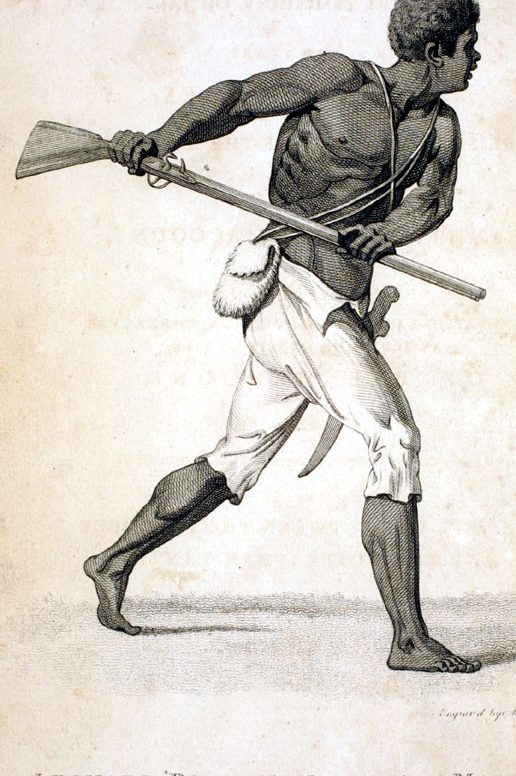
The term “Maroons” comes from the Spanish word cimarrón, meaning wild or untamable. It originally referred to African and indigenous slaves who escaped servitude to form independent communities in the mountains. These groups of resisters, far from being disorganized bands, relied on social structures inherited from Africa, particularly among the Akan people, who had a long tradition of military resistance. Deported during tribal wars between African coastal kingdoms, the Akan, who were the majority among the Jamaican Maroons, brought with them guerrilla tactics, spiritual rituals, and a solid political structure.
The first revolt and the birth of the Maroons
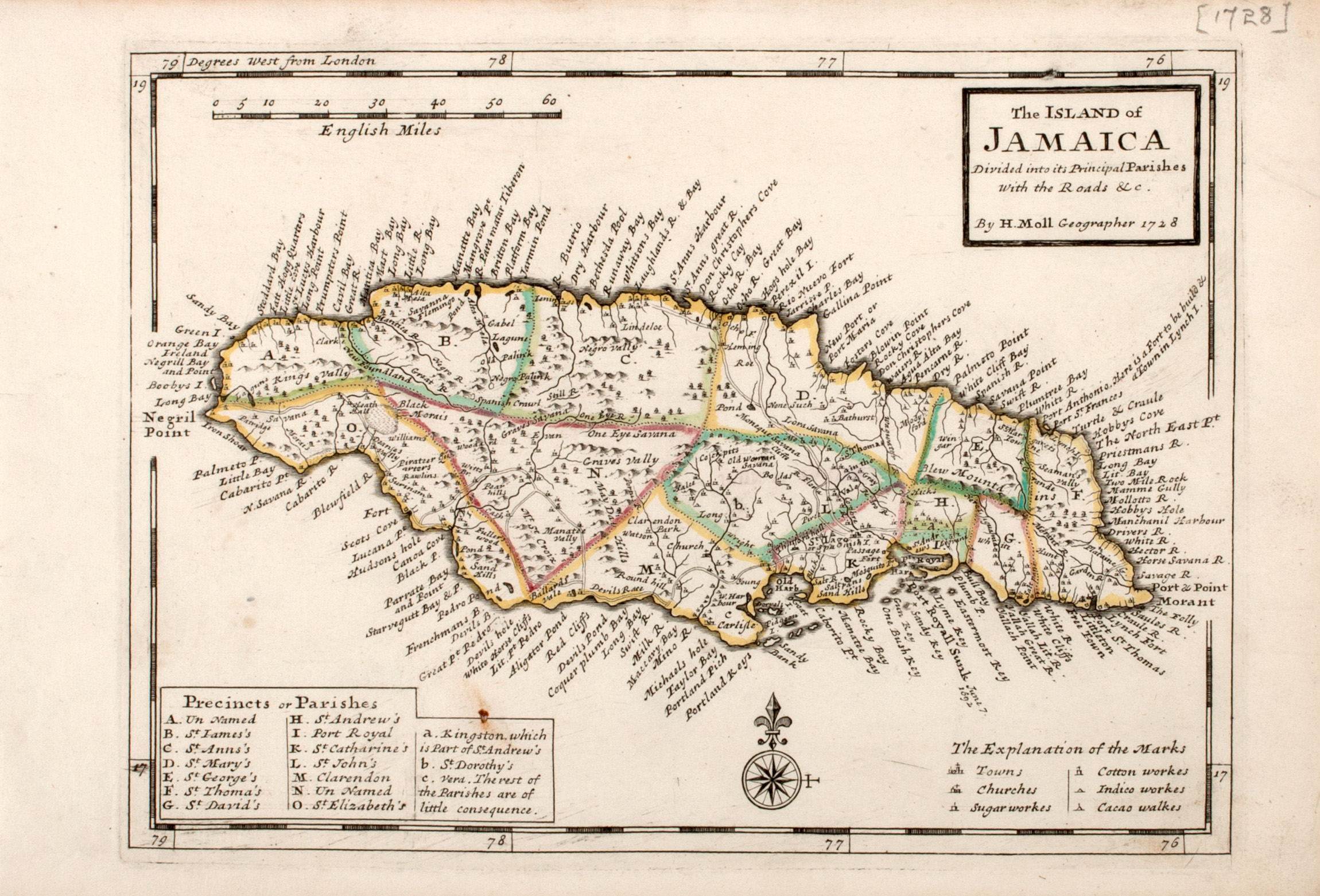
In 1655, when the English conquered Jamaica, then a Spanish colony, they did not anticipate one of the fiercest resistances they would encounter. The enslaved Africans, estimated to be around 1,500 at the time, took advantage of the invasion to escape into the mountains, forming the first Maroon groups. These Africans, mainly from the Akan region of the Gold Coast, had military expertise that allowed them to inflict heavy losses on the English colonizers, drawing on irregular warfare tactics from their native lands. According to contemporary accounts, these former captives used sound signals to communicate across the mountains, a practice reminiscent of the communication methods employed in tribal conflicts in West Africa.
A British soldier, James Knight, described in a letter from 1730:
“THEY APPEAR WITHOUT WARNING, EMERGING FROM THE SHADOWS OF THE TREES, ATTACK WITH TERRIFYING PRECISION, AND THEN DISAPPEAR INTO THE MOUNTAINS LIKE GHOSTS. THEY KNOW HOW TO USE THE LAND AS A WEAPON.”
A war of attrition against the British

The years that followed were marked by a series of violent clashes between the colonizers and the Maroons, led by charismatic leaders such as Cudjoe and Nanny. Nanny, a priestess of Akan origin, not only led the warriors in battle but also presided over spiritual rituals essential to maintaining the group’s cohesion and morale. She established a fortified village called Nanny Town, located in the Blue Mountains, where several hundred Maroons lived in complete autonomy, practicing agriculture, hunting, and perpetuating African customs. Women planted yams and bananas, while men hunted wild boars, replicating a way of life similar to that of their African ancestors.
The governor of Jamaica in 1735 described in a dispatch to the British Council:
“THE GREATEST DANGER TO THIS ISLAND IS NOT THE THREAT OF FOREIGN INVASIONS BUT THESE UNTAMABLE BLACKS WHO, FROM THE HILLS, SPREAD TERROR AMONG THE SETTLERS AND INCITE REVOLTS AMONG THE SLAVES.”
The Maroons: a symbol of freedom and hope for the enslaved
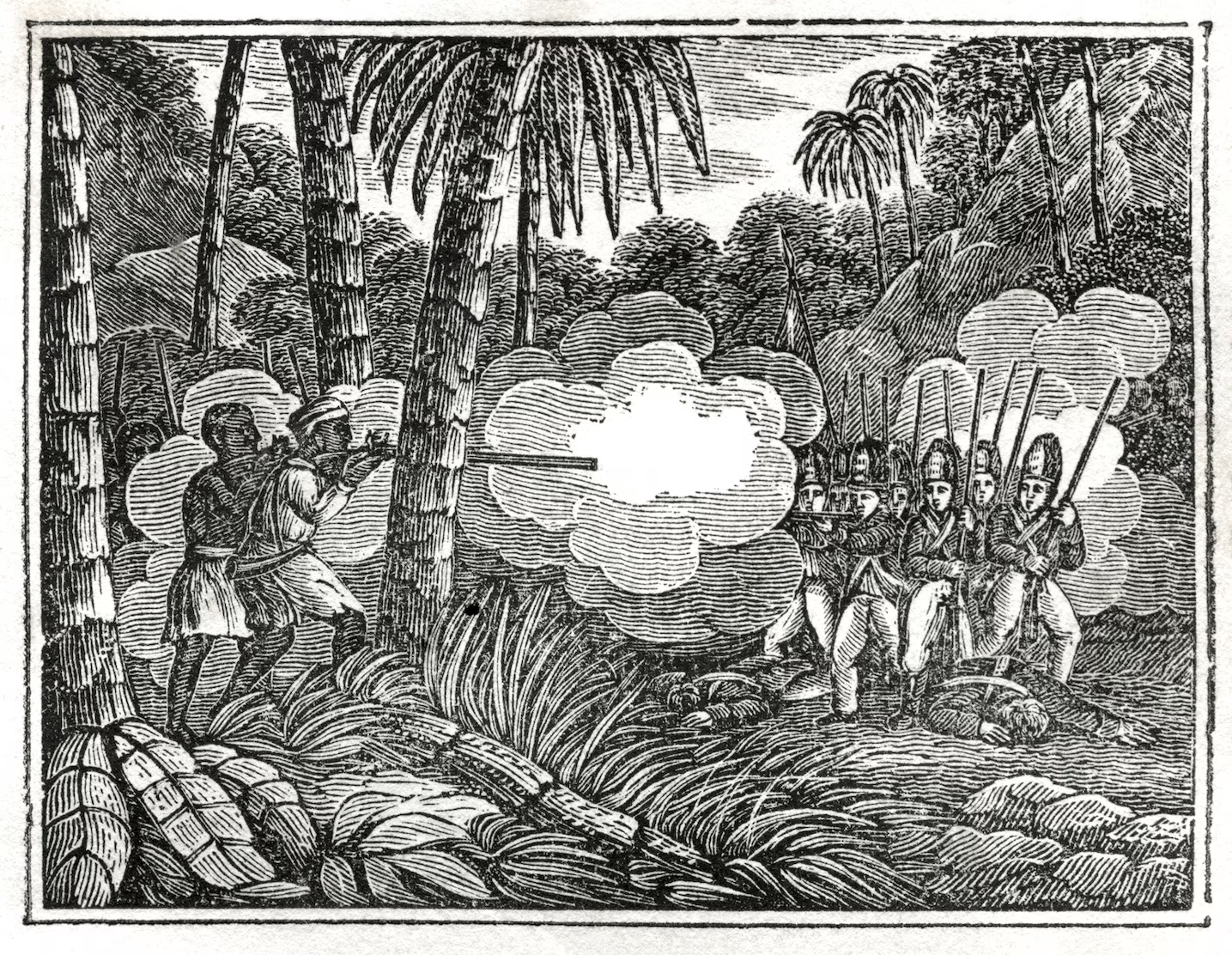
As the British sought to expand their sugar plantations on the northeast coast of the island, the Maroon raids persisted. In 1730, after a series of plantation fires and the defection of many slaves to join the Maroons, the Crown sent regiments of professional soldiers to eradicate this threat. However, the British army, accustomed to conventional battles, struggled against the Maroon guerrilla tactics. A British officer, Edward Trelawny, wrote about the Maroon tactics:
“THEY DON’T FIGHT US ON THE GROUND WE KNOW. THEY LURE US INTO THE MOUNTAINS, WHERE OUR MEN GET LOST, DISORIENTED, AND PICKED OFF ONE BY ONE, LIKE GAME.”
These military successes of the Maroons not only inspired fear but also hope among the enslaved Africans on the plantations. Each Maroon raid was a reminder that freedom was still possible. Escaped slaves often joined them, reinforcing their ranks and fueling the cycle of resistance. Some Maroons also used their position to organize revolts on the plantations themselves, further weakening the sugar economy.
A fragile peace and a controversial pact
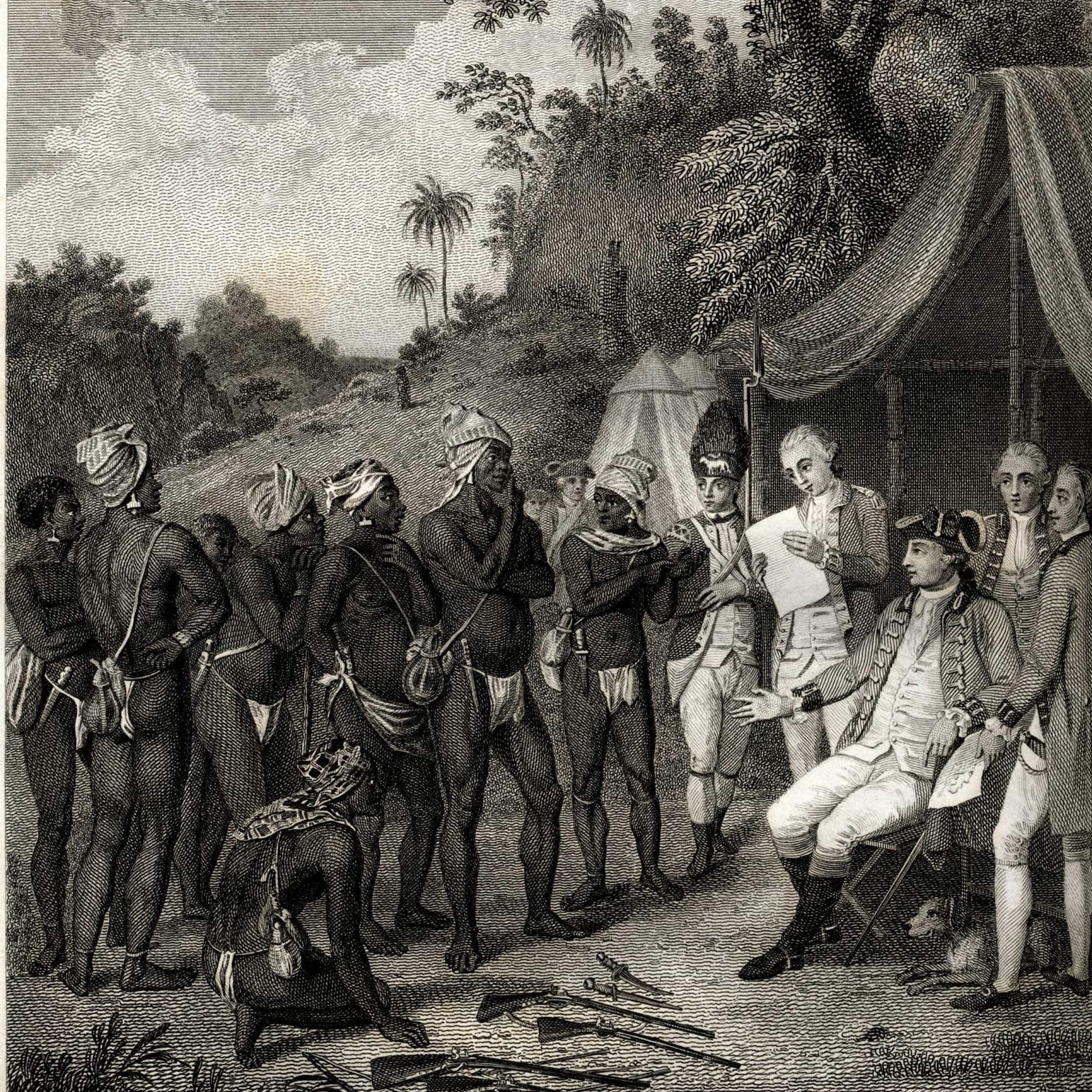
In 1739, unable to defeat the Maroons, the British opted for a compromise solution. Treaties were signed with the Maroon leaders, guaranteeing them conditional freedom and ownership of 1,500 acres of land. In exchange, the Maroons agreed not to attack the plantations and, most controversially, to capture and return runaway slaves to the British authorities. Cudjoe, leader of the western Maroons, signed this agreement, sparking anger among some of his companions, who saw this betrayal as a violation of the very principles of their resistance.
One deserter, Kofi, even attempted to foment a rebellion against Cudjoe but was captured and executed. Despite this controversial pact, the Maroons remained a symbol of resistance for African slaves throughout the 18th century.
The legacy of the Maroons and their impact on the diaspora
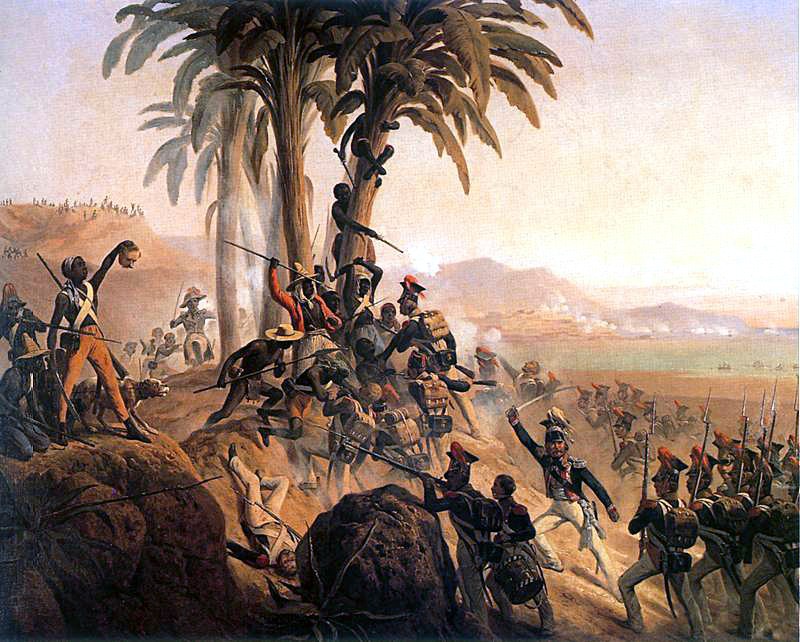
The story of the Jamaican Maroons is a powerful reminder of African resilience in the face of oppression. By establishing free societies based on traditions and knowledge brought from Africa, the Maroons not only preserved their autonomy but also maintained a direct link to their African heritage. Their struggle also inspired other resistance movements, notably in Haiti, where the 1791 revolution was partly motivated by the desire to recreate independent societies like those of the Jamaican Maroons.
Furthermore, their legacy continues to resonate in contemporary struggles for civil rights and recognition of Afro-descendant identity. Maroon communities still exist in Jamaica today, perpetuating a centuries-old tradition of resistance and freedom.
Conclusion
The story of the Jamaican Maroons is much more than just a chapter in the fight against slavery. It is a testament to the strength and persistence of African identities in the Americas and how these identities shaped resistance to oppression. Through their victories and compromises, the Maroons left a lasting legacy that continues to inspire and challenge traditional colonial histories.
Références :
- Mavis Campbell / The Maroons of Jamaica
- Edward Brathwaite / Warriors of the Jamaican Hills
- Michael Craton / Testing the Chains: Resistance to Slavery in the British West Indies
